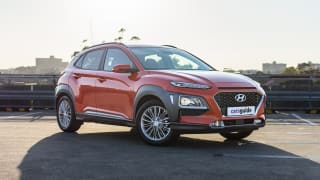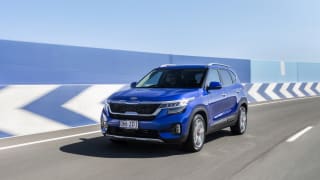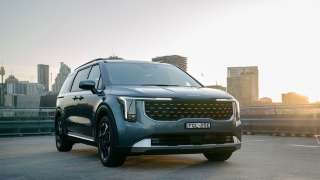How many seats? Need third-row seating? You're going to need to shop up a few size brackets if you want a seven-seat SUV, as both of these models have five seats – but they're both surprisingly roomy inside.
Starting in the back row, it's the Honda that has a slight legroom advantage – even considering the VW's sliding second-row seat. But the Honda suffers slightly less headroom as a result of its swoopier roofline, where the VW is boxy and offers lots of headroom, plus it's a bit easier to get in and out of as a result.
If you've read anything about the Honda HR-V (or the Jazz hatchback upon which it is based) you will have seen the term 'Magic Seats'. These clever folding, flipping, flattening second-row seats allow you to adapt the rear area of the cabin to suit cargo-carrying capacity rather than passengers, if that's what you need. They operate in a 60:40 fashion, and you can fold up the seat bases for loading taller items, or flatten the seat backrests down for a massive amount of long-load room.
The VW has a second-row with a sliding seat base, which isn't quite as adaptable as the Honda, but offers its own benefit. For instance, if you don't need lots of rear-seat leg room – perhaps you've got a child in a booster or capsule – you can slide the seat forward to allow better boot space for all the stuff you need to take with you for the bub. Or, if you have taller kids or friends in the car, the back seat can be slid rearward to allow plenty of legroom – even if the driver is on the taller side. More on that below.
Both are great for the class in terms of space in the back row, though each could be better when it comes to amenities.
-
 In usability terms, we couldn’t quite fit our three CarsGuide suitcases (124L, 95L, 36L) in together without removing the parcel shelf. (image: Matt Campbell)
In usability terms, we couldn’t quite fit our three CarsGuide suitcases (124L, 95L, 36L) in together without removing the parcel shelf. (image: Matt Campbell)
-
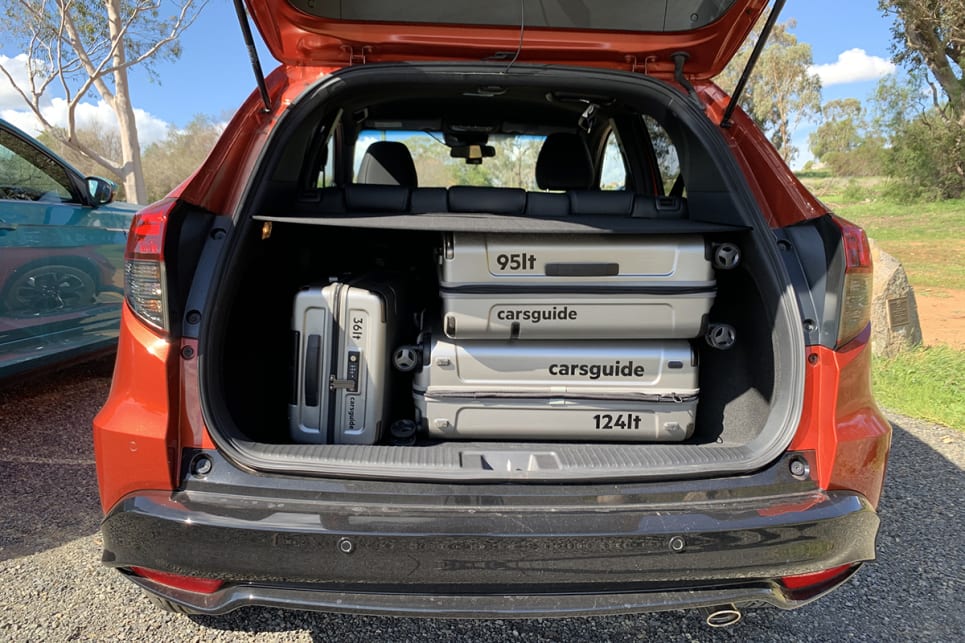 The Honda's boot space – 437L (VDA) to window line – easily swallowed all three suitcases, and with room to spare. (image: Matt Campbell)
The Honda's boot space – 437L (VDA) to window line – easily swallowed all three suitcases, and with room to spare. (image: Matt Campbell)
-
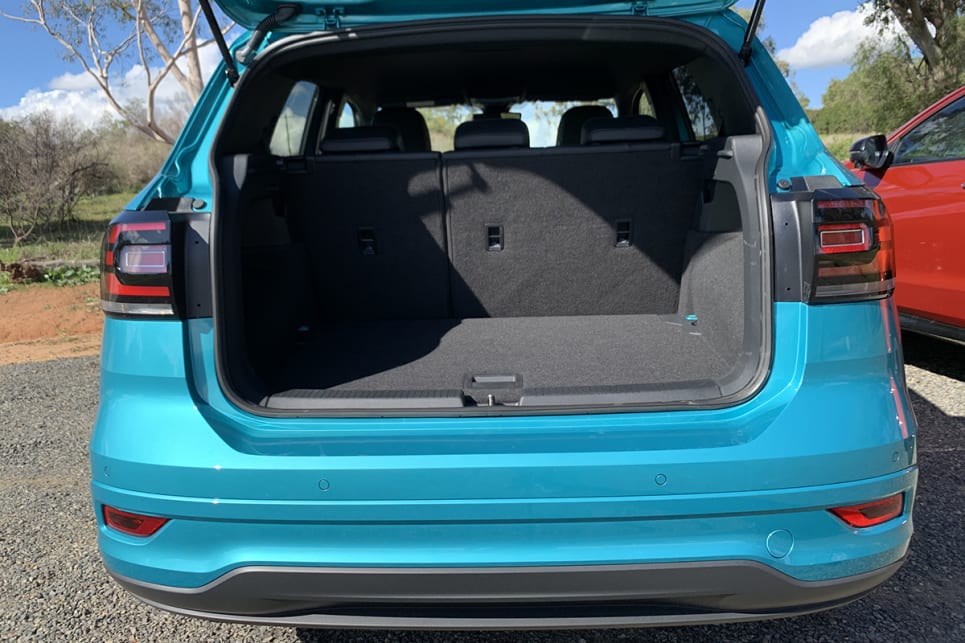 The VW offers between 385 litres and 455 litres, depending on where the second-row seat is positioned. (image: Matt Campbell)
The VW offers between 385 litres and 455 litres, depending on where the second-row seat is positioned. (image: Matt Campbell)
-
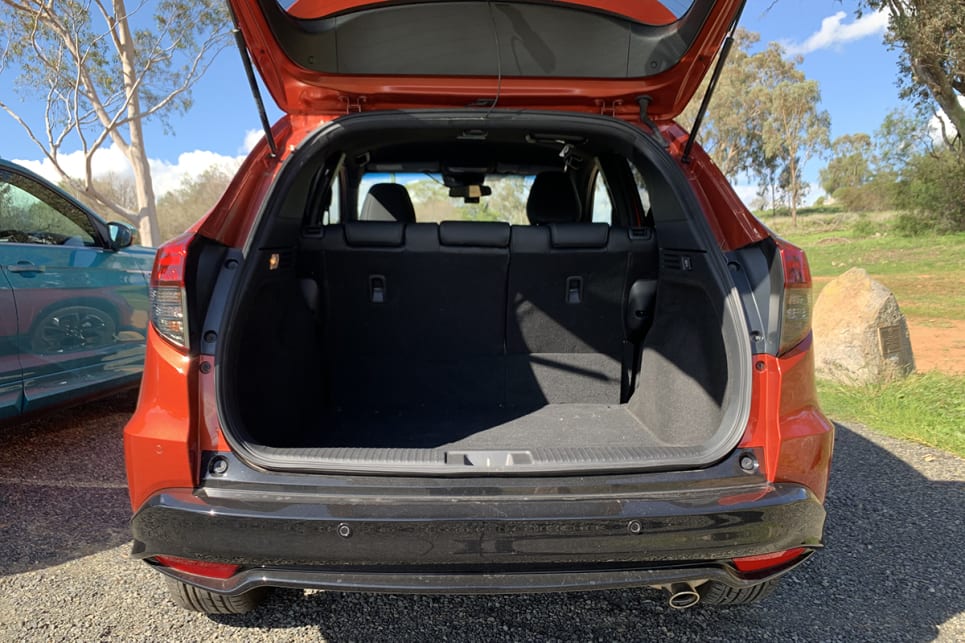 With those aforementioned Magic Seats folded flat, there is a huge 1462L of cargo space to the ceiling. (image: Matt Campbell)
With those aforementioned Magic Seats folded flat, there is a huge 1462L of cargo space to the ceiling. (image: Matt Campbell)
The pair miss out on a flip-down centre armrest, and there are no dedicated cup holders in the back, either. The HR-V does have a sort-of cup holder in the footwell, which also houses a 12-volt outlet. That's not quite as rear-passenger-friendly as the T-Cross, which has a pair of USB ports and a clever little storage box.
Both have map pockets on the backs of the front seats, and both have door pockets – the HR-V's are small enough to be considered useless, while the T-Cross's are huge, but not lined or contoured to suit bottles, so things may clunk around in there.
The experience in the back seat is better in the HR-V overall, as the space is just a touch more accommodating, but also because it has comfort elements the T-Cross can't match. Little things like soft elbow pads on the doors that are often overlooked, as it costs a little more to put padding in than it does to just slap a hard plastic trim piece in, as is the case in the VW.
If you have kids, both of these cars will cater to your needs: each has outboard ISOFIX child seat anchor points, as well as three top-tether attachments, but note that the Honda's middle-seat top-tether is ceiling-mounted over the boot space, not on the back of the rear seat.
Up front, it's a bit of a different story.
The VW is more technical looking, more modern feeling, and a nicer place to be overall. A lot of that comes down to the media system, which is better in every imaginable way – unless you're the sort of person who really needs sat nav as standard, because it's an option in the T-Cross.
-
 The experience in the back seat is better in the HR-V overall, as the space is just a touch more accommodating. (image: Matt Campbell)
The experience in the back seat is better in the HR-V overall, as the space is just a touch more accommodating. (image: Matt Campbell)
-
 If you’ve read anything about the Honda HR-V (or the Jazz hatchback upon which it is based) you will have seen the term 'Magic Seats'. (image: Matt Campbell)
If you’ve read anything about the Honda HR-V (or the Jazz hatchback upon which it is based) you will have seen the term 'Magic Seats'. (image: Matt Campbell)
-
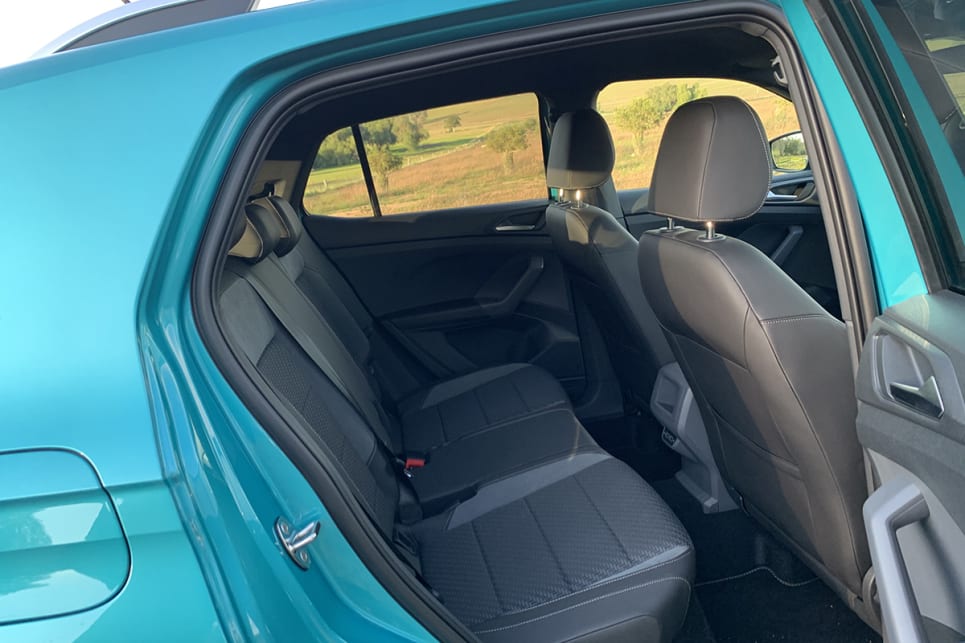 The VW has a second-row with a sliding seat base, which isn’t quite as adaptable as the Honda, but offers its own benefit. (image: Matt Campbell)
The VW has a second-row with a sliding seat base, which isn’t quite as adaptable as the Honda, but offers its own benefit. (image: Matt Campbell)
Our test vehicle had the Sound & Vision pack ($1900), which includes sat nav, a fully digital instrument display and a Beats audio system – all of which are nice additions, but even in T-Cross models without that pack, the experience is nicer than the Honda. You still get a standard 8.0-inch touchscreen (with tuning and volume knobs!), as well as Apple CarPlay and Android Auto. There's also two front USBs (total: four), and all T-Cross models come with Qi wireless phone charging.
Now, the HR-V is soon to be updated with a new media screen – still a 7.0-inch unit, but finally with the smartphone-mirroring tech that it so desperately needs. So, if that sort of thing matters to you – and trust me, it should, because the interface and menus of the current screen are terrible – you should make sure you're buying a HR-V with the updated tech.
It will still fall behind the VW on a few counts, though: the Honda doesn't have as many USB ports (two only); it has single-zone rather than dual-zone climate control; it doesn't come with wireless phone-charging at all, and – importantly, if you live in states where speed limits are strictly enforced – there is no digital speedometer.
And even though the Honda has leather seat trim, soft materials all over the doors and a pretty decent design layout, it is feeling its age. From the media screen to the dot-matrix-style digital trip meter, it isn't as contemporary inside.
The Honda has a slight storage advantage over the VW, with a huge centre cup holder section (with adjustable floor) that is handy for storing odds and ends as well as beverages. It has shaped bottle holders in the doors, and a secondary shelf under the bridge for the transmission.
-
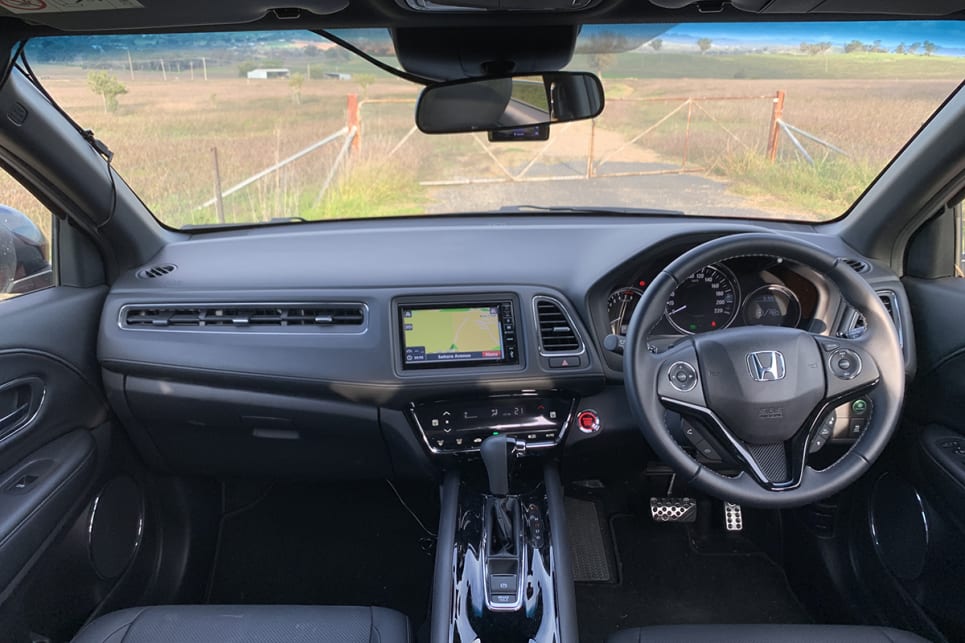 Note: this is the 2020 model year Honda HR-V, and there’s an update coming for the 2021 version, due in June or so. (image: Matt Campbell)
Note: this is the 2020 model year Honda HR-V, and there’s an update coming for the 2021 version, due in June or so. (image: Matt Campbell)
-
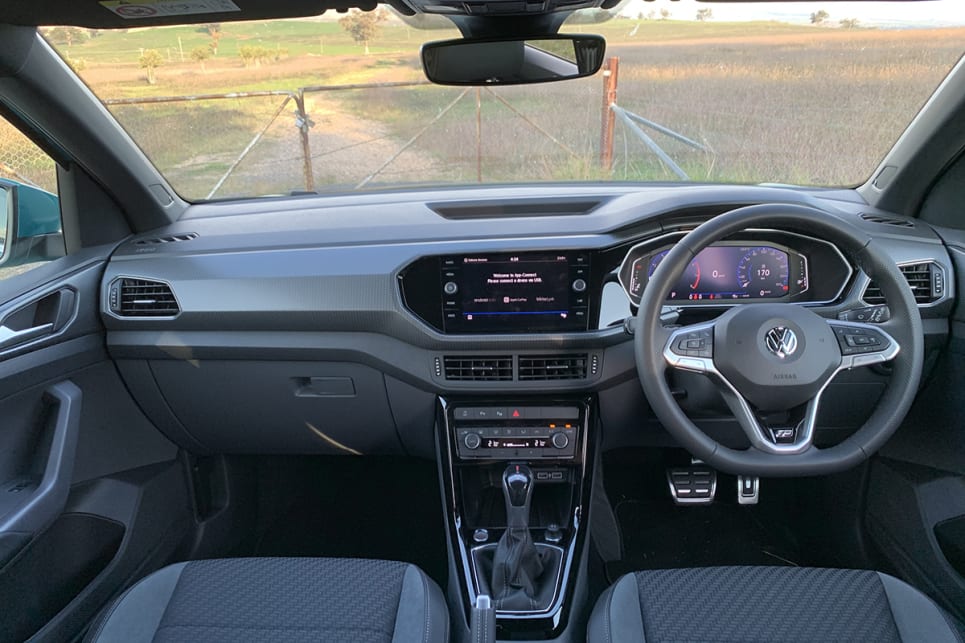 The VW is more technical looking, more modern feeling, and a nicer place to be overall. (image: Matt Campbell)
The VW is more technical looking, more modern feeling, and a nicer place to be overall. (image: Matt Campbell)
The VW is a little less copious in terms of between-the-seats stowage, but still has a pair of cup holders and that section in front of the gear selector (with the phone-charging pad) is a good size. Also good are the door pockets, which are indeed massive – but again, they're not moulded to suit a bottle or anything in particular, and unlike more expensive VW products, they aren't lined, either.
I'm assuming that if you're considering either of these models then boot space is important to you – as both offer exceptional levels of cargo capacity for their size.
The VW offers between 385 litres and 455 litres, depending on where the second-row seat is positioned. Those are VDA figures calculated to the parcel shelf, and the capacity jumps to 1281L with the rear seat folded down flat. In usability terms, we couldn't quite fit our three CarsGuide suitcases (124L, 95L, 36L) in together without removing the parcel shelf, and we had to slide the seat forward a touch, too. Still, this is an impressive feat for such a compact car.
The Honda had no such issue, with its boot space – 437L (VDA) to window line – easily swallowing all three suitcases, and with room to spare. It doesn't have a traditional parcel shelf (instead it has a flexible mesh screen which can be folded up), and with those aforementioned Magic Seats folded flat, there is a huge 1462L of cargo space to the ceiling.
Overall, there are positive attributes for both of these models, but it's the slightly smarter – if less appealing – cabin of the Honda that wins this section.
| Model | Score |
| Honda HR-V RS | 9 |
| VW T-Cross 85TSI Style | 8 |


























